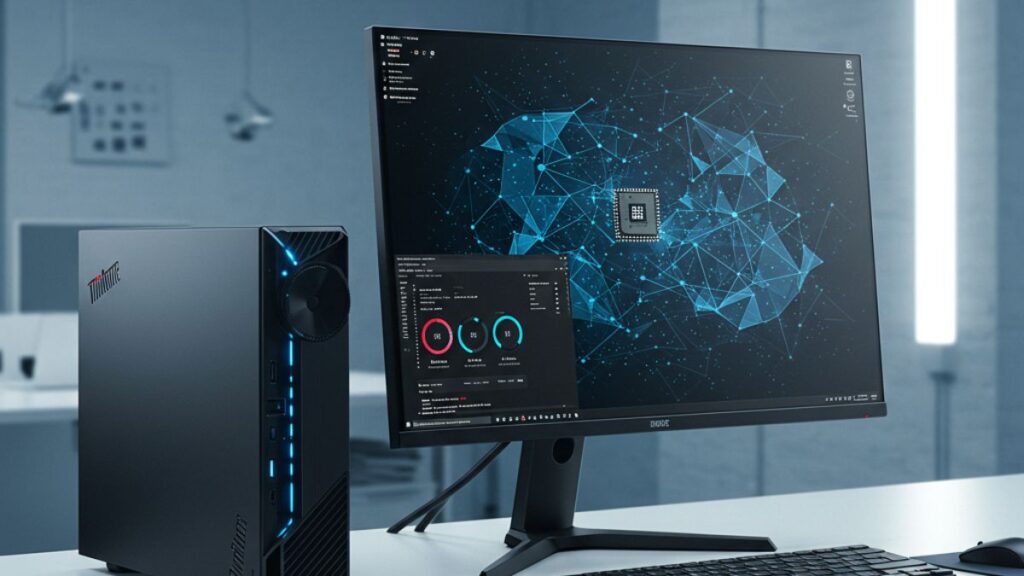We are in a huge hype cycle for AI. This technology will certainly be a massive game changer, but it is new, still untrusted, and isn’t yet fully wrapped in mature services. Existing markets, like console gaming, are off-cycle and not doing that well as a result, but other areas, like automotive, are going vertical.
Let’s talk about the interesting things in the financials from the three big chip companies AMD, Intel, and Qualcomm this week.
AMD
AMD is the king of focus, and its ability to slipstream to other companies and collaborate closely with its customers remains a sustaining advantage. AMD’s recent data center successes are nothing short of amazing with a whopping 115% increase to a record $2.8B in revenue that showcases an amazing ability to fulfill unmet demand from NVIDIA on AI. AMD’s cloud instances are up 34%, which may not be as amazing as 115%, but that is still a very powerful increase. AI-focused business alone has climbed to $1B, and there is substantial headroom for that as most of the AI technology is manufacturing-constrained, not demand-constrained. Once those manufacturing constraints are relieved, AMD should do even better.
In the client sector, AMD grew 49%, and this was before it really had an AI client solution. This suggests that its performance vector, which moved it away from the low-cost value model that it previously lived under, is working out surprisingly well. While it’s still not market-dominant, AMD’s growth has been nothing short of impressive.
Even the embedded sector grew impressively at 41%, showcasing again that the company’s intense focus on customer needs in this area is showing incredible strength. This is AMD’s superpower. It’s just better at working with its embedded customers than most, and it shows in this success number.
The only number that dropped is console gaming. It was down 59% because the gaming consoles that are in the market are old, and due to manufacturing constraints, the typical low-cost consoles that come out mid-cycle haven’t appeared and won’t. But console gaming is outdated, and I wonder if this segment has much left in it. I can see opportunities connected to turning consoles into better set-top boxes used to update otherwise fine large-screen TVs (like giving them a multi-wireless headphone option) but I haven’t seen that positioning lately. So, this downside just reflects the cyclical weakness in this segment right now.
Intel
Intel is still recovering from prior bad management. Although Pat Gelsinger is doing a heroic job in restoring Intel’s competitiveness and moving more manufacturing onto U.S. soil as a hedge against future wars and pandemics, the process and costs are taking longer than originally thought which is often the case. As a result, Intel delivered disappointing results, but revenue growth was still in line with expectations, so ultimately, it didn’t miss. The second half of 2024 continues to look challenging for the company, but it’s taking decisive actions by improving its AIPC portfolio and positioning, and it was instrumental in first creating the AIPC category.
Intel implemented a massive $10B cost reduction plan to eliminate inefficiencies and increase competitiveness. I don’t think there’s anyone who knows how to do this better than Pat Gelsinger.
In the end, of these three companies, Intel is doing the most to assure the U.S. maintains manufacturing capabilities that could be critical to the country’s survival, but this extra burden and related costs are having a significant adverse impact on Intel’s financial performance this year and will likely continue until this costly strategy is completed. Once that happens, the additional manufacturing capability should better assure Intel’s, and the U.S.’s, continued semi-conductor strength.
Qualcomm
Qualcomm kicked butt in the automotive segment and beat expectations by a whopping $150M. The combination of automotive and IoT generated an impressive $2.2B, showcasing Qualcomm’s unique strength in both segments. Overall Earnings Before Taxes (EBT) and Earnings Per Share (EPS) were significantly above market expectations, with 11% year-over-year growth in EBT and an even more impressive 25% growth in EPS.
Qualcomm’s AIPC design wins were especially outstanding. It received an amazing 20 design wins and was featured by Microsoft at its recent AI Copilot+ launch as the dominant processor vendor, a nod that Intel typically enjoys. I’m expecting significant growth for Qualcomm in this segment in the next financial reporting cycle because the AI laptops are not only impressive but are well-priced and have equally impressive battery life.
Even smartphone handsets were up an impressive 12%, showcasing that Qualcomm is the one to beat when it comes to smartphone solutions.
Qualcomm is leading with strong growth through the end of the year. Considering its impressive performance so far, this should be an achievable goal.
Wrapping Up
With the exception of Intel, which is still both recovering from the mistake of prior management and investing uniquely and massively in manufacturing capacity, this was a strong quarter for the segment overall, and it further showcases U.S. dominance in the market, dominance that Intel is uniquely assuring with its strategic manufacturing and foundry investments.
AI will be the biggest driver for all segments going forward, but it is not stable yet. There are likely to be revenue and profitability hills and valleys until we reach maturity, and with AGI (Artificial General Intelligence) coming, we may not reach that stability until at least 2030.
Not a single one of these companies is slacking, which indicates that, at least for now, the U.S. microprocessor market is extremely strong and not likely to be materially challenged for some time yet, even though China is emerging as the biggest future threat to this dominance.



